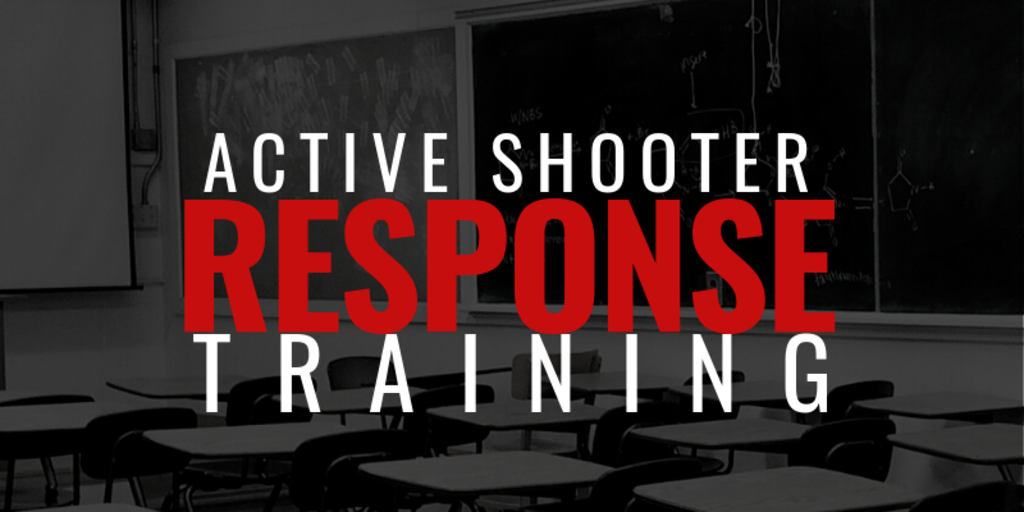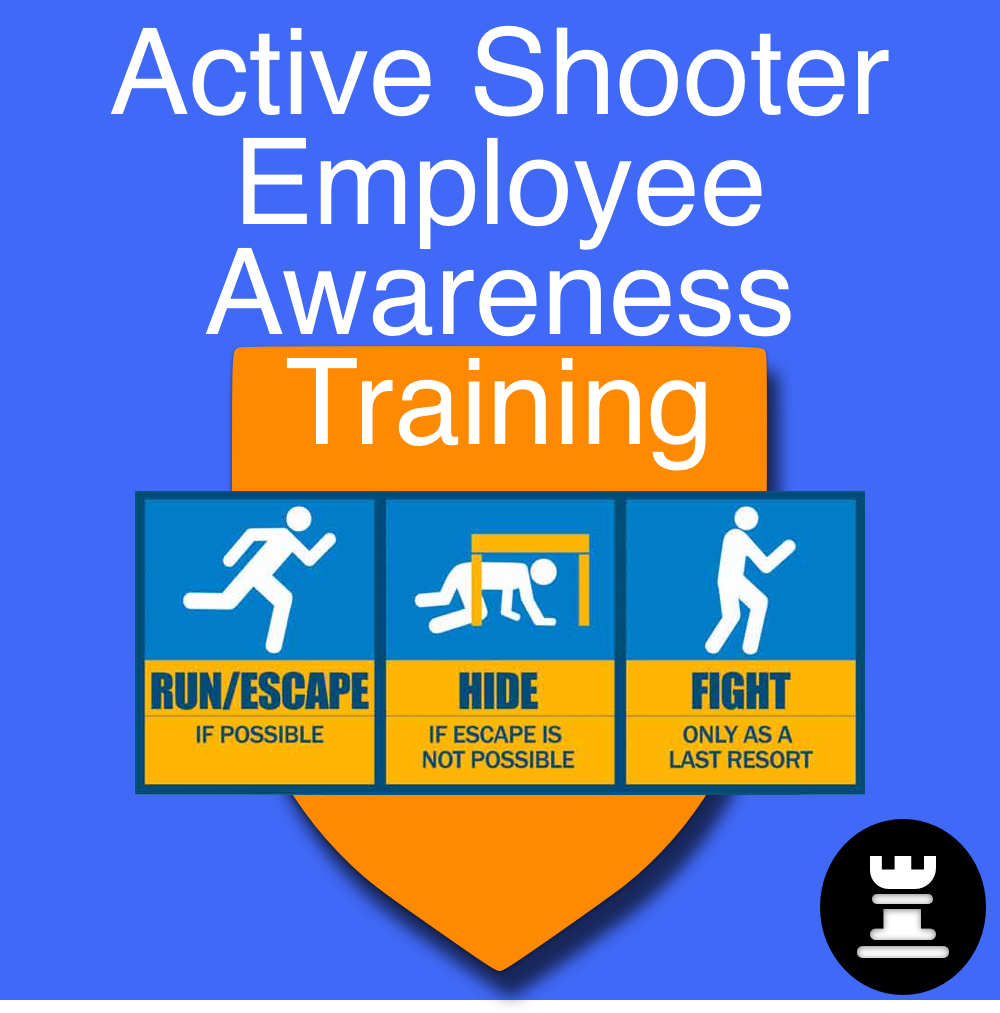Discovering the Key Elements and Goals of Reliable Energetic Shooter Training Programs
Energetic shooter training programs are critical in outfitting individuals and organizations with the essential abilities to respond successfully to possible dangers. These programs incorporate important components, such as the "Run, Hide, Fight" strategy, practical circumstance simulations, and communication protocols, fostering an environment of readiness. They highlight mental resilience to aid participants navigate high-stress situations. active shooter training. As we check out the complexities of these training programs, it becomes obvious that understanding their extensive nature is essential to improving security measures and feedback capabilities. What specific components truly specify their efficiency?
Significance of Active Shooter Training
Energetic shooter training programs are vital for enhancing readiness and response despite prospective dangers. These programs aim to furnish people, organizations, and neighborhoods with the knowledge and skills needed to effectively reply to energetic shooter scenarios. The boosting frequency and seriousness of such occurrences highlight the importance of aggressive actions, as prompt and informed responses can significantly minimize injury.

In addition, these programs can help reduce the stress and anxiety and worry that frequently accompany discussions regarding prospective hazards. By providing structured advice and useful strategies, individuals obtain self-confidence in their capacity to respond properly. Ultimately, the relevance of active shooter training lies in its potential to conserve lives, reduce injuries, and grow a prepared and resistant area capable of dealing with unexpected obstacles.
Secret Components of Training Programs
Efficient active shooter training programs normally include numerous vital elements made to prepare individuals for real-world circumstances. The very first part is detailed education and learning on the nature of active shooter occurrences, consisting of stats, study, and psychological variables that affect assailants. This theoretical foundation is critical for fostering awareness and understanding among individuals.
Next, programs often include training on individual safety and security procedures, stressing the "Run, Hide, Battle" technique. Participants discover how to assess their setting, make quick choices, and take ideal activities throughout a situation. Additionally, the addition of efficient interaction abilities is crucial, as individuals need to comprehend exactly how to report occurrences and share important information with police.
An additional necessary component is the involvement of law enforcement or safety specialists, that offer understandings right into tactical actions and the value of cooperation throughout a dilemma. In addition, programs need to deal with the mental results of an energetic shooter scenario, offering approaches for dealing and recuperation.
Finally, ongoing training and correspondence course are critical to make sure that expertise continues to be current and participants feel great in their abilities. Together, these crucial parts create a well-shaped training program that gears up individuals to react effectively to an active shooter occasion.
Realistic Scenario Simulations
Realistic situation simulations are a vital aspect of energetic shooter training programs, offering participants with the opportunity to engage in hands-on method that mirrors potential real-life scenarios. These simulations enhance the training experience by producing resource an immersive setting where people can use academic understanding in sensible setups.
Via the usage of role-playing, mock situations, and specialized training facilities, participants experience the prompt obstacles and stress factors related to an active shooter case. This method of training promotes quick decision-making, synergy, and the application of safety methods under pressure. It permits responders to create crucial skills such as situational recognition, threat analysis, and efficient discharge treatments.
Additionally, practical simulations help to identify potential weak points in participants' reactions, allowing instructors to supply targeted comments and boost overall preparedness. The incorporation of varying situations, including various places and assailant profiles, even more enhances the training experience, making sure that participants are well-appointed to handle a series of prospective situations.
Inevitably, these simulations serve not only to instruct yet additionally to develop self-confidence among participants, promoting a sense of preparedness that is necessary for effective emergency feedback when faced with an active shooter hazard. active shooter training.
Communication Strategies in Training
Clear interaction is important in active shooter training programs, as it straight influences the efficiency of reaction initiatives throughout a situation. Training individuals have to comprehend the protocols and treatments that will lead their activities if faced with an energetic shooter scenario. Establishing clear lines of communication makes certain that all people entailed can communicate details quickly and precisely.

Furthermore, training programs must stress the relevance of active listening - active shooter training. Participants should be educated to translate and react to info effectively, reducing misunderstandings that can bring about dangerous scenarios. Normal comments sessions post-training can likewise improve interaction methods, guaranteeing that all participants really feel equipped to share their experiences and tips for improvement. Eventually, reliable interaction strategies are necessary for preparing Learn More Here individuals to react decisively and find out cohesively despite an active shooter incident.
Emotional Preparedness Techniques
Emotional preparedness techniques are significantly acknowledged as important parts of active shooter training programs. These methods aim to gear up individuals with the mental strength required to respond efficiently in high-stress situations. By promoting a state of mind attuned to possible risks, individuals can better manage fear, stress and anxiety, and confusion during essential incidents.
Secret emotional preparedness methods include scenario-based training and tension shot workouts. Scenario-based training submerses individuals in realistic simulations that mimic the disorder of an active shooter event, enabling them to exercise decision-making under pressure. This exposure helps construct knowledge with emergency methods, enhancing natural feedbacks.
Tension shot entails steady direct exposure to stress-inducing situations, permitting individuals to develop coping devices. This can include breathing workouts, visualization methods, and cognitive restructuring to reframe unfavorable thoughts. By integrating these methods, training programs can grow a feeling of self-confidence and control, which is vital in crisis situations.
Additionally, post-incident psychological assistance is critical to attend to the emotional results of an energetic shooter event. Including mental health resources right into training programs not just prepares people for instant reactions but also promotes long-term emotional well-being, inevitably contributing to a more secure and extra resilient setting.
Verdict

Comments on “Why Active Shooter Training Is Crucial for Work Environment Security”